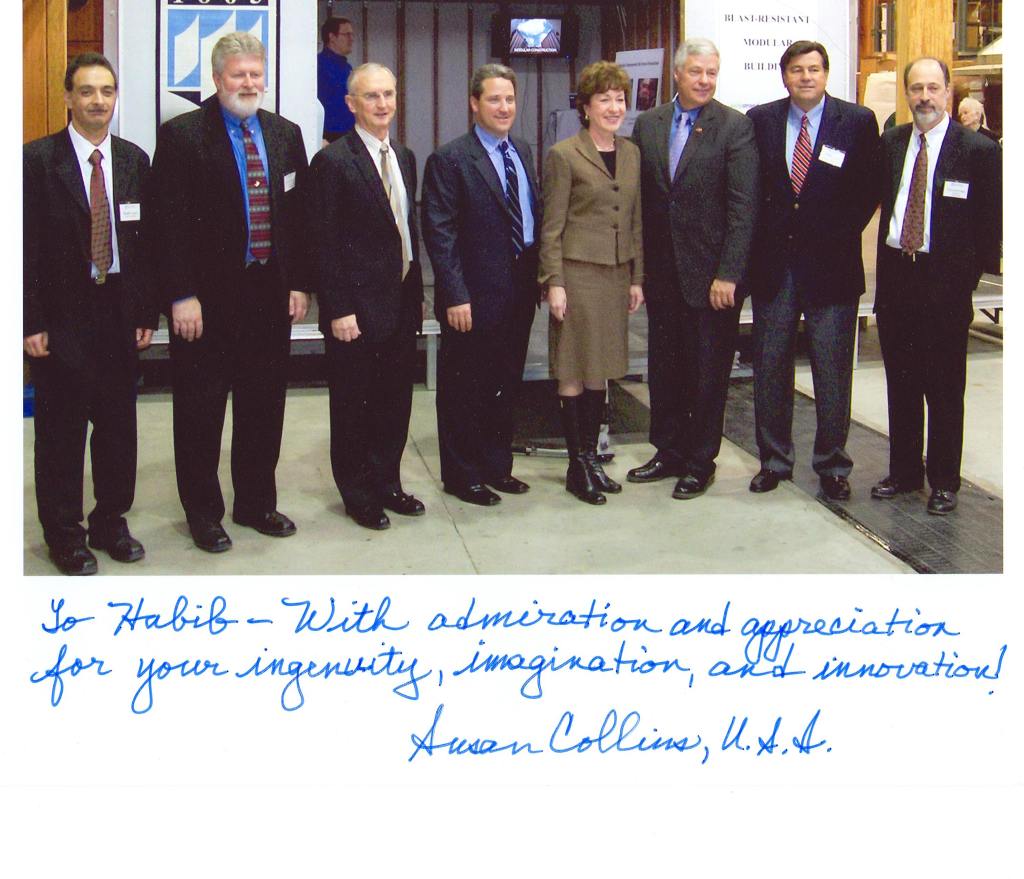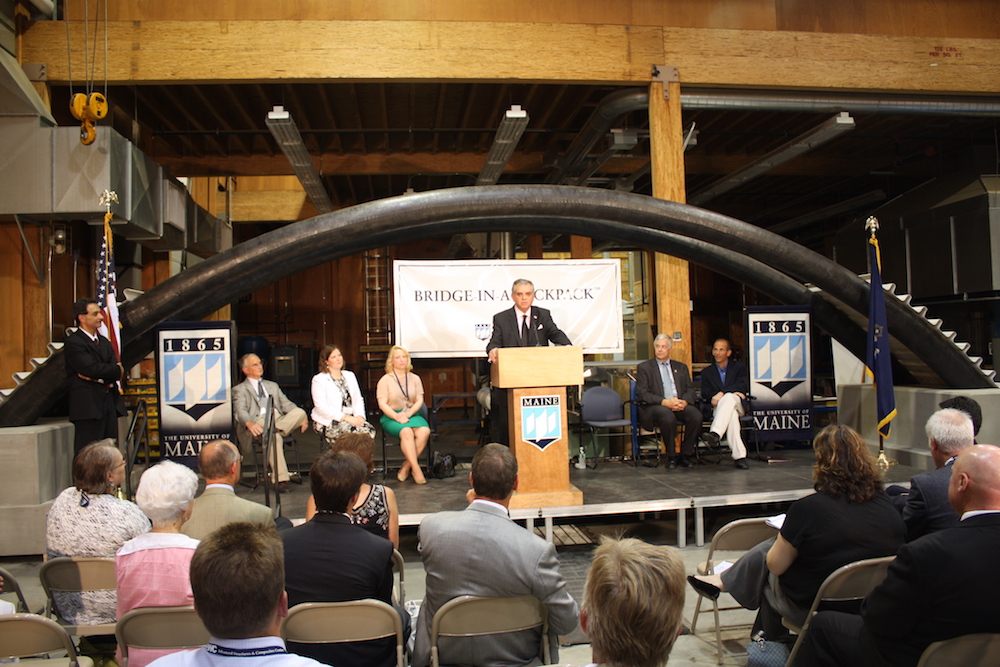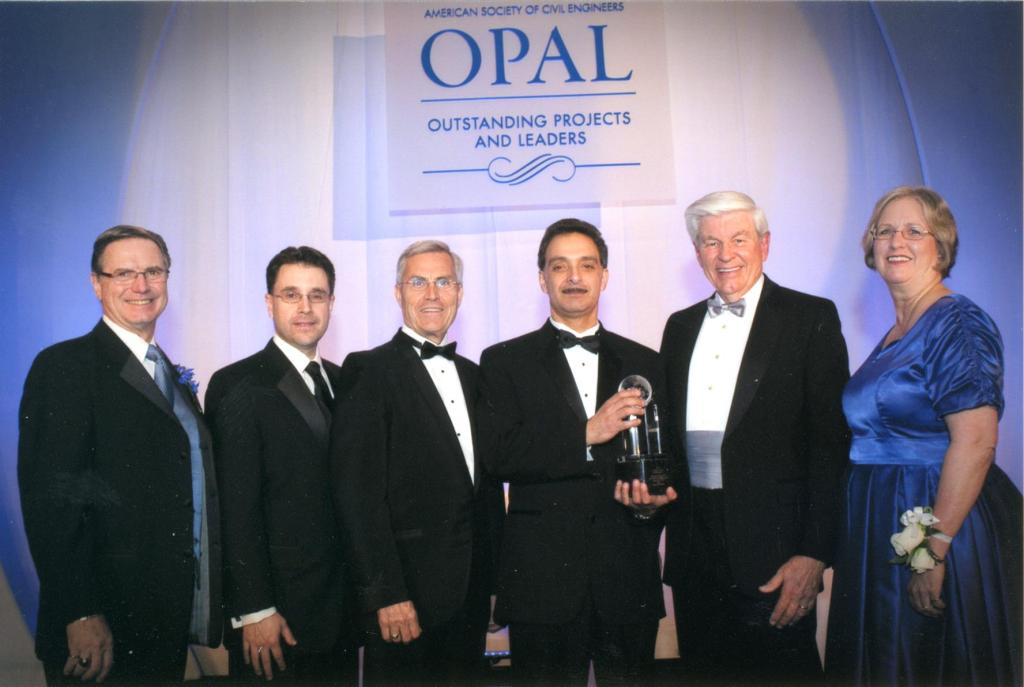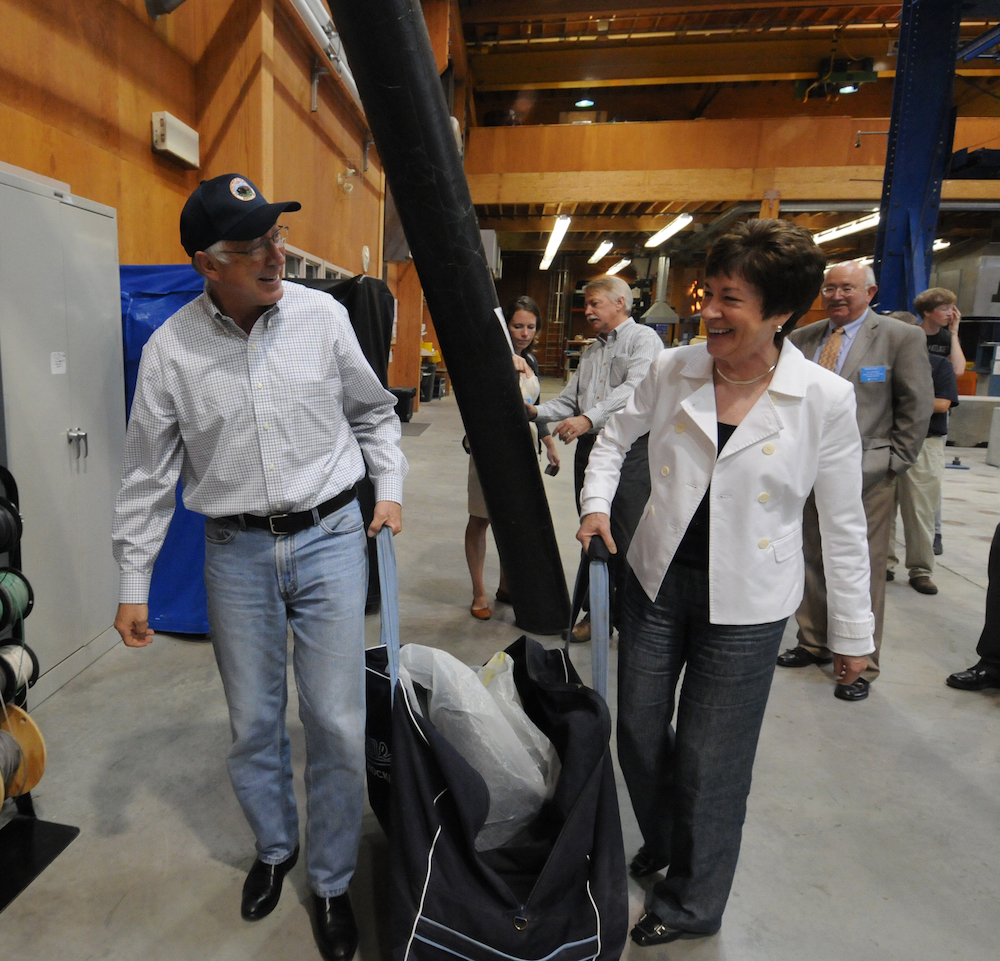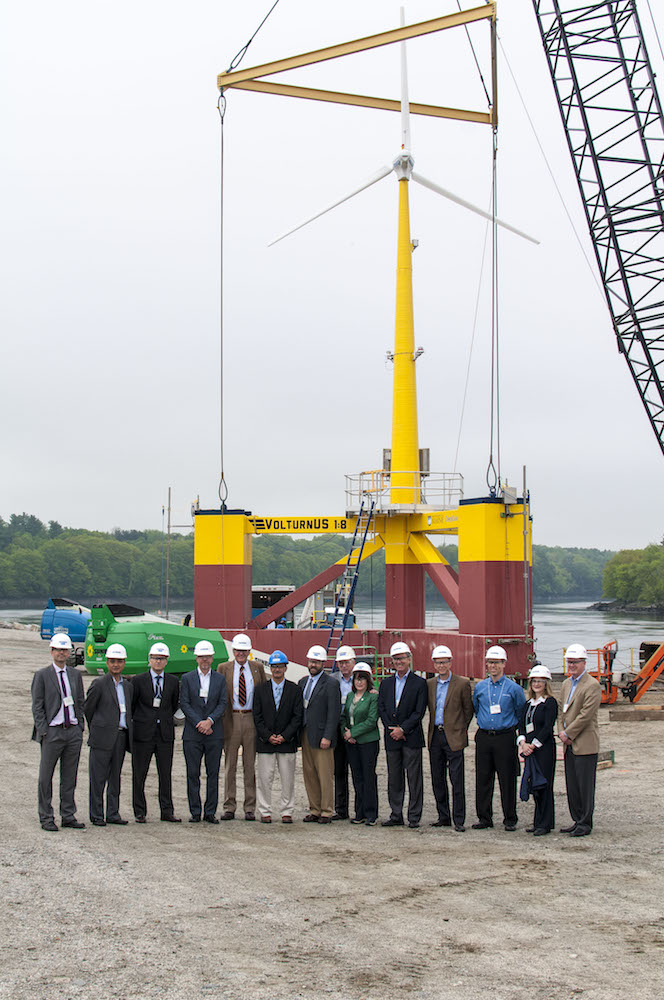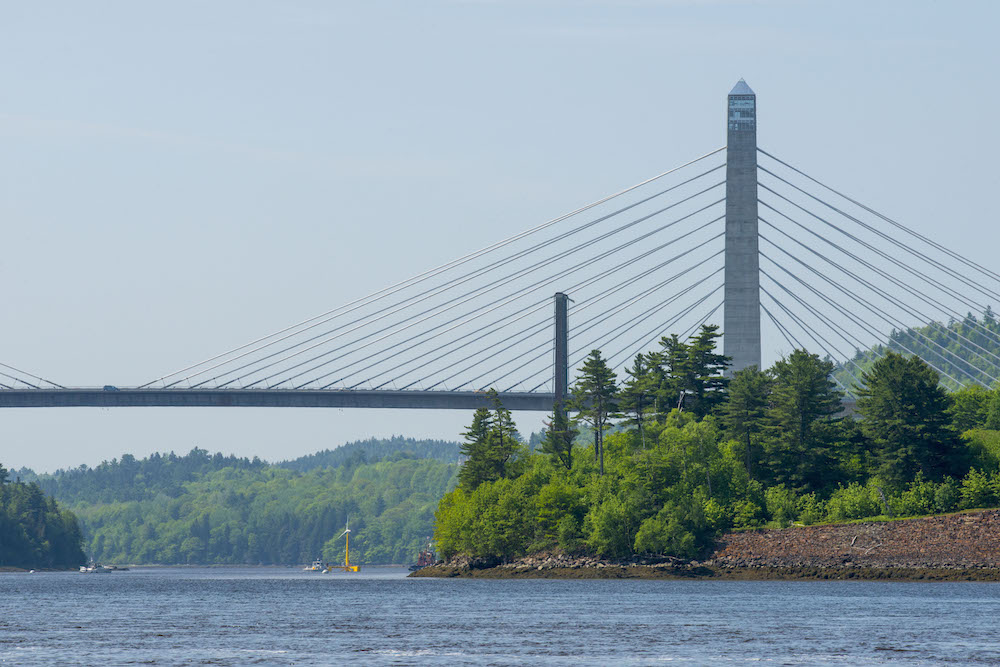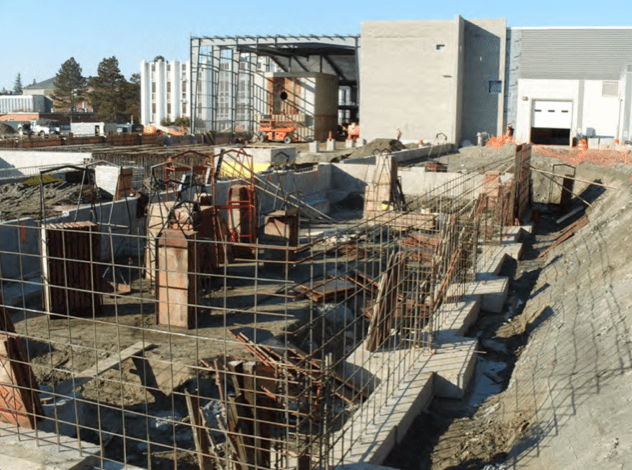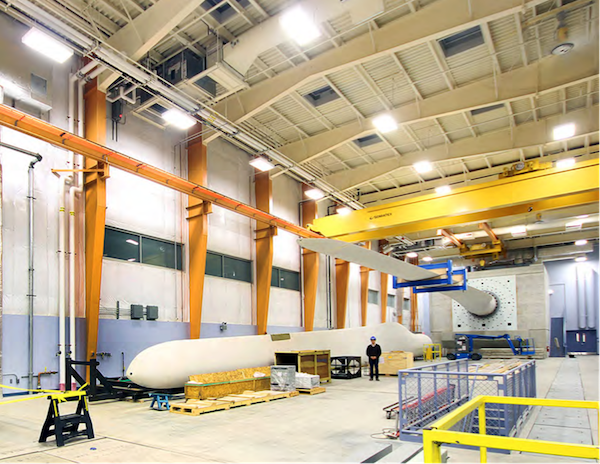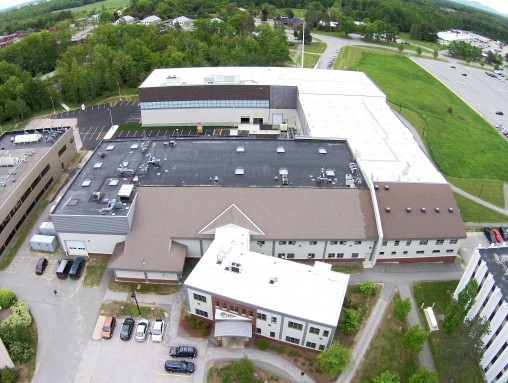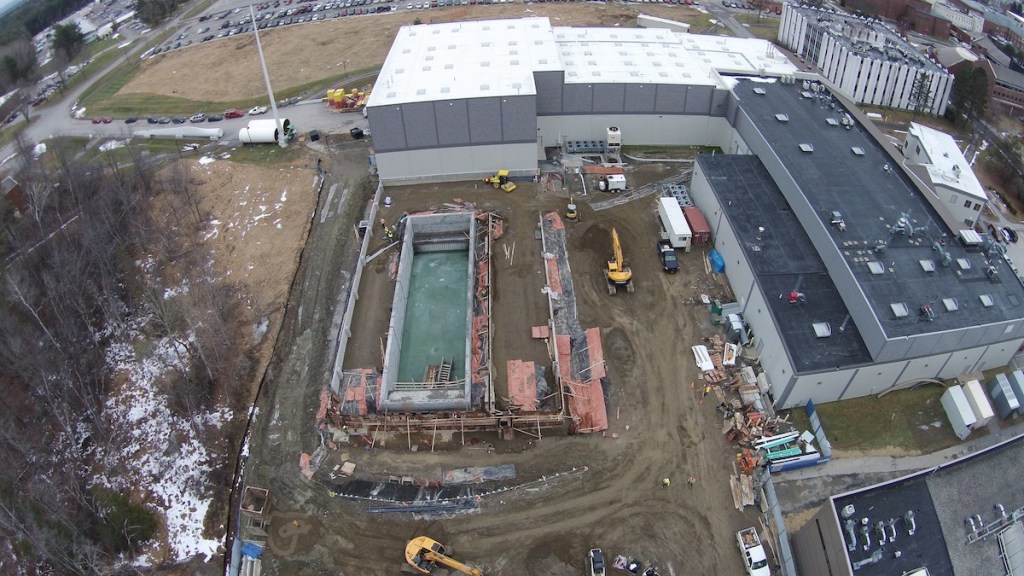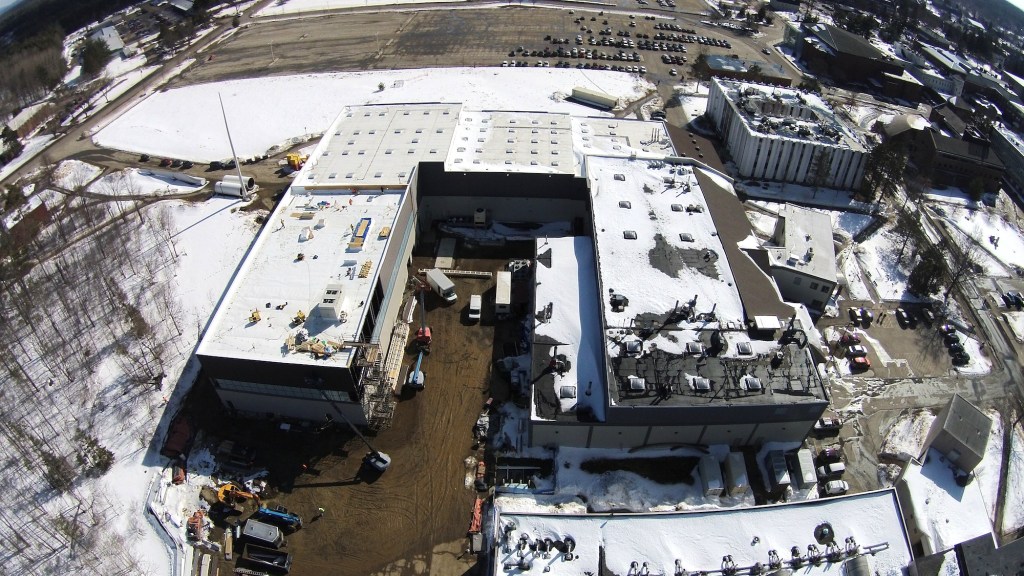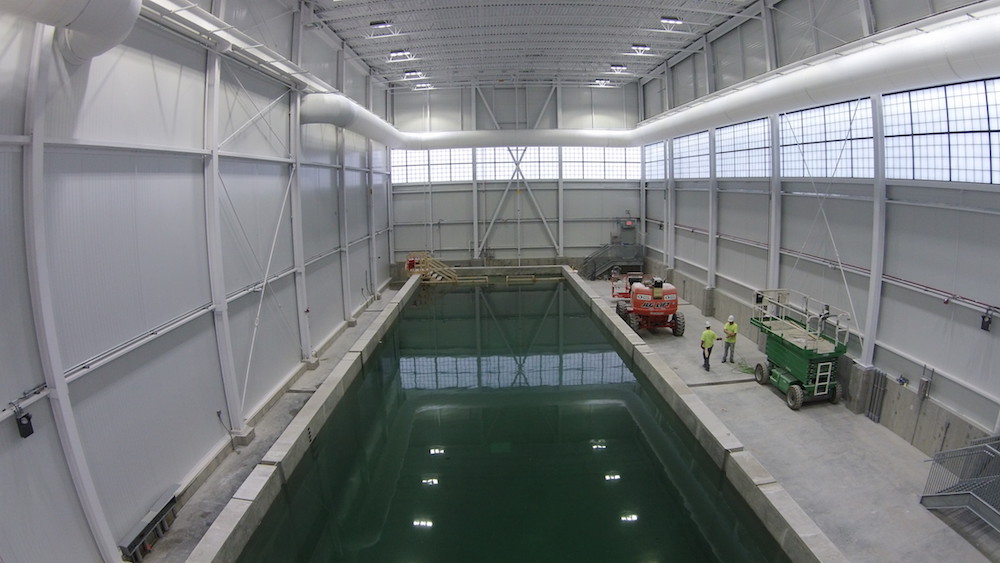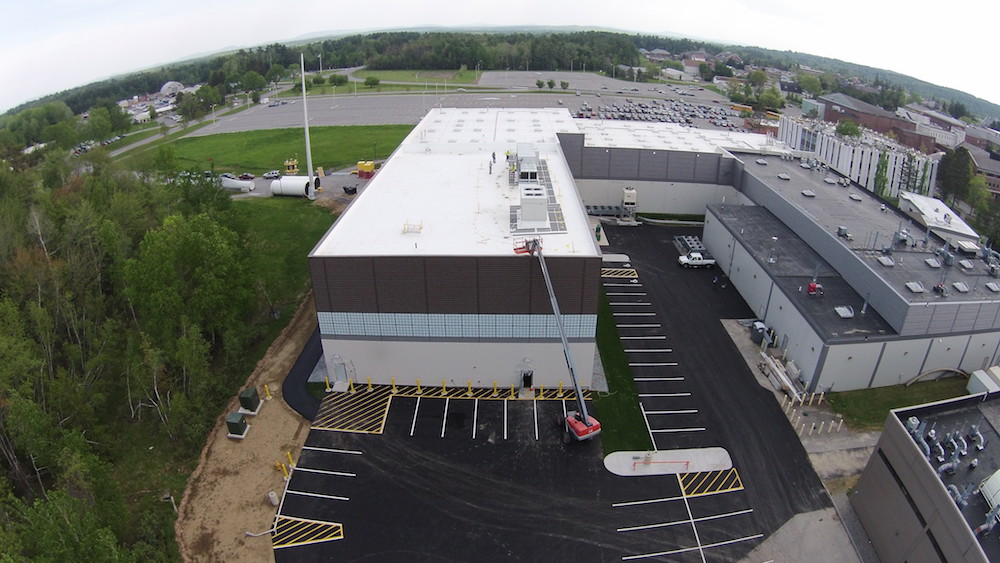History
A History of Our Facilities
Founding the AEWC
The UMaine Composites Center was founded in 1996 with support from the National Science Foundation (NSF) through the Established Program to Stimulate Competitive Research. Dr. Habib Dagher and Dr. Stephen Shaler, with assistance from Dr. Barry Goodell, Dr. Eric Landis, and Jake Ward, authored a grant titled, “Composite Reinforced Wood Hybrids for Civil Infrastructure Systems.” This grant supported the creation of the Advanced Engineered Wood Composites Center (AEWC), and included the construction of a 30,000 sq. ft. facility, major equipment purchases, and new faculty hires.
The grant proposal received top marks from all nine NSF reviewers, which ultimately resulted in the $3.3 million award. Dagher, Shaler, and UMaine’s then System Chancellor Terry MacTaggart turned to the Eastern Maine Development Corporation (EMDC) and Sanford “Sandy” Blitz, who was running the federal Economic Development Administration (EDA) program at EMDC. Blitz and the UMaine team wrote a successful $2.2 million proposal to the EDA.
The UMaine team then approached Governor Angus King and successfully raised $250,000 for an EDA-required local match. With NSF, EDA, and state match funds in hand, construction on laboratory’s first section began, and the Center officially opened in 1999. Equipment, however, was purchased in following years with grants through federal and state agencies, including the NSF, the U.S. Department of Agriculture, the US Navy, the Maine Department of Transportation, and others.
The First Labortory Expansion
In November of 2003 the Center celebrated its first groundbreaking laboratory expansion. The two story, 7,100 square-foot expansion provided laboratory space geared toward technology development and commercialization. The primary goal of this expansion was to allow space for more research outside of wood composites and structural testing. In fact, the expansion was to enable engineers and scientists to conduct studies involving the shipbuilding industry and continue work on a new product, oriented strand lumber.
2011 Expansion, Offshore Wind Laboratory
In 2011, the Center officially opened its Offshore Wind Laboratory, adding structural testing of blades, towers, and foundation components up to 230 feet in length to its list of capabilities. This expansion was the first building on campus to receive LEED Gold certification.
2012 Name Change, AEWC to Advanced Structures and Composites Center
Given the continuous growth and widening range of research, it became clear that AEWC no longer encompassed the full extent of research and development activities at the Center. In 2012, at the request of the Center’s director and faculty, the University of Maine Board of Trustees approved a name change, formally renaming the AEWC to the Advanced Structures and Composites Center (ASCC).
2015 Expansion, Alfond W2 Ocean Engineering and Advanced Manufacturing Labs
In 2015, the Center received its largest philanthropic gift to date from the Harold Alfond Foundation to name the $13.8 million Alfond W2 Ocean Engineering and Advanced Manufacturing Labs. The Foundation provided $3.9 million to match the $9.98 million raised by the NSF, EDA, a State of Maine bond, and other sources. The expansion of the Alfond labs brought the total size of the UMaine Composites Center to 100,000 square feet.
A Look into the Past
